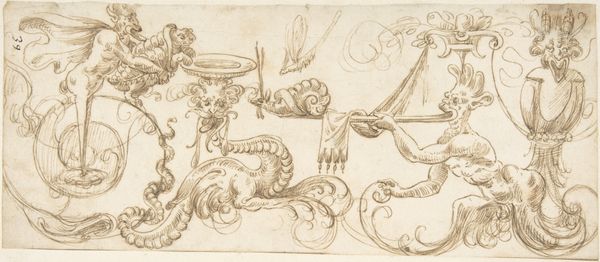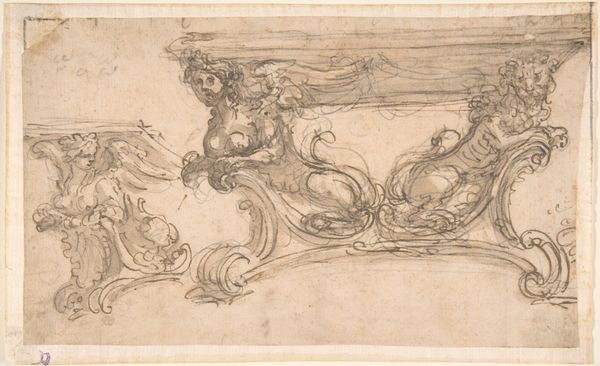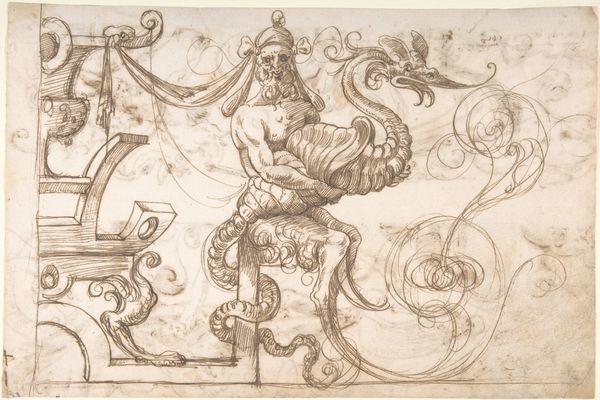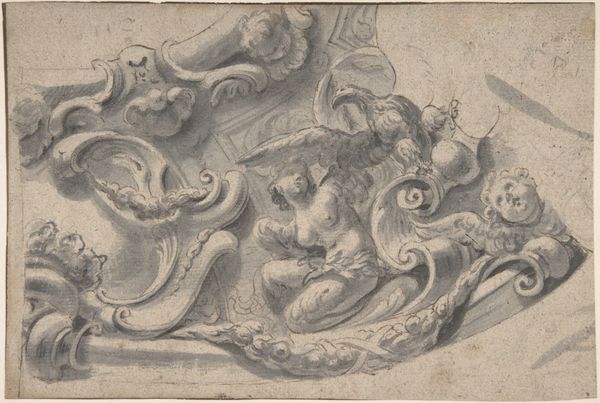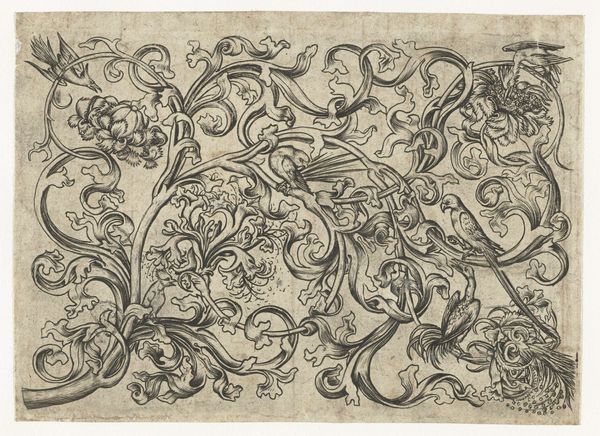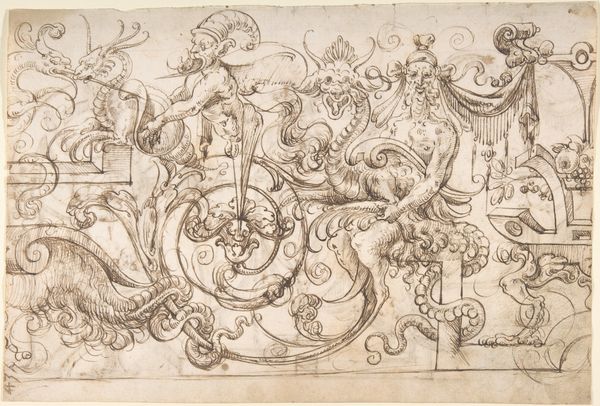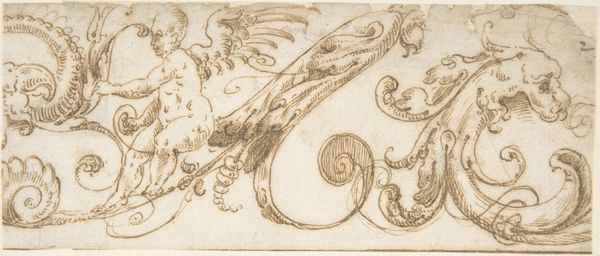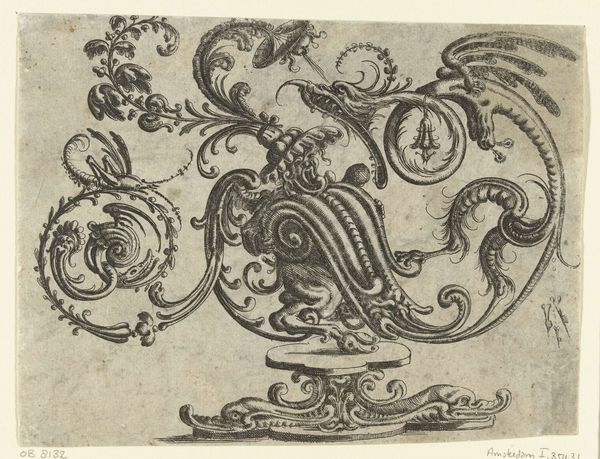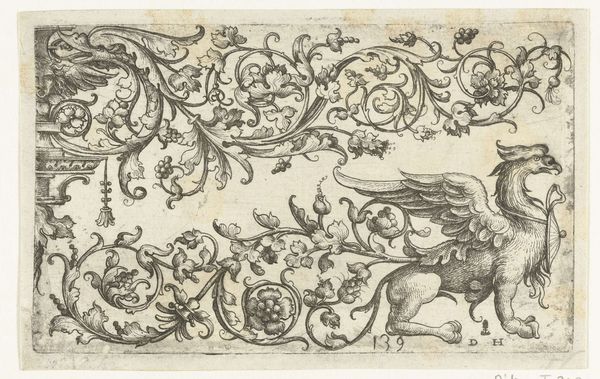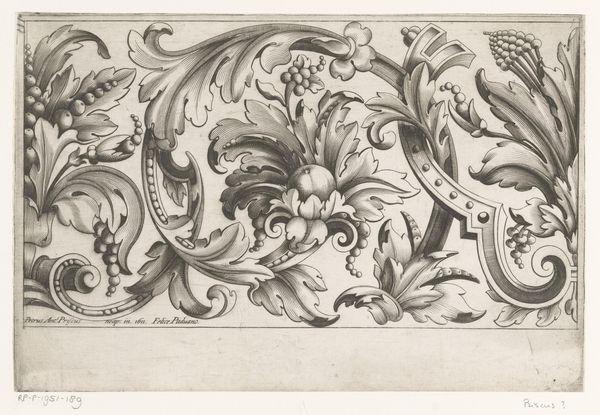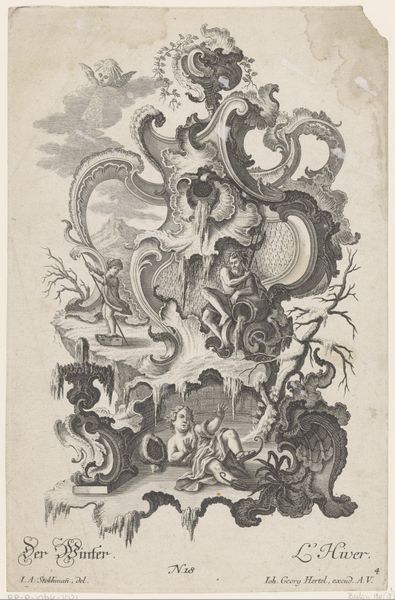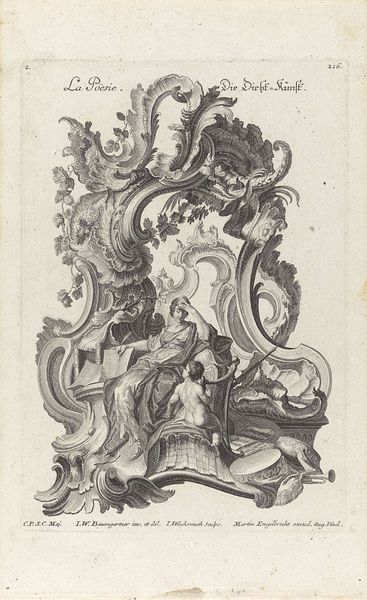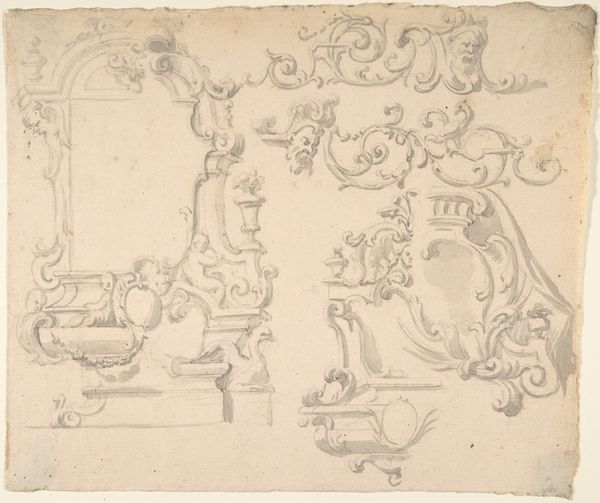
Design for a Tablet for a Chimney-Piece with Two Swans in Combat, Enclosed within a Scrolling Cartouche with a Water-Spouting Dragon's Head 1762
0:00
0:00
Dimensions: sheet: 8 x 13 1/16 in. (20.3 x 33.2 cm)
Copyright: Public Domain
Editor: This is a pen and ink drawing from 1762 by Thomas Johnson. It’s titled “Design for a Tablet for a Chimney-Piece with Two Swans in Combat, Enclosed within a Scrolling Cartouche with a Water-Spouting Dragon's Head.” The title is quite a mouthful! I’m really drawn to the ornate details; it feels very symbolic. How do you interpret this work, especially considering its historical context? Curator: That’s a great observation. This drawing speaks volumes about the social and cultural aspirations of its time. The Baroque and Rococo styles were often commissioned to convey power and sophistication. Notice the prominent display of the swans "in combat" within the cartouche. Editor: Yes, I see how the warring swans are at odds with the delicate curves and ornamentation of the overall piece. Curator: Exactly! It might seem paradoxical, but the inclusion of these animals locked in a bitter struggle against each other brings attention to issues of identity, hierarchy, and power dynamics that characterized 18th-century society. Also consider, who was permitted access to such decorative items and the messages they convey? Editor: That’s fascinating. So it's not just decoration, it’s communicating complex messages about societal values? Curator: Precisely. What seems like a simple design proposal is, in effect, revealing a rigid social structure being bolstered through aesthetic choices. Moreover, the inclusion of mythical creatures reflects a society that was starting to mix classicism and new philosophical ideals during the Enlightenment. What do you think about this connection? Editor: I never thought of it that way. I guess I always assumed these kinds of drawings were simply decorative blueprints. Curator: Often these drawings reflected how identities were performed and perceived within specific social circles, which often meant upholding exclusivity. Looking closely at this drawing invites questions regarding class, privilege, and what such visual language excludes. Editor: I’ve definitely gained a new perspective on decorative arts. There's so much more depth here than I initially perceived! Curator: Indeed, delving into these intersectional narratives allows us to understand how aesthetics often operate as expressions of power, class, and cultural identity.
Comments
No comments
Be the first to comment and join the conversation on the ultimate creative platform.
